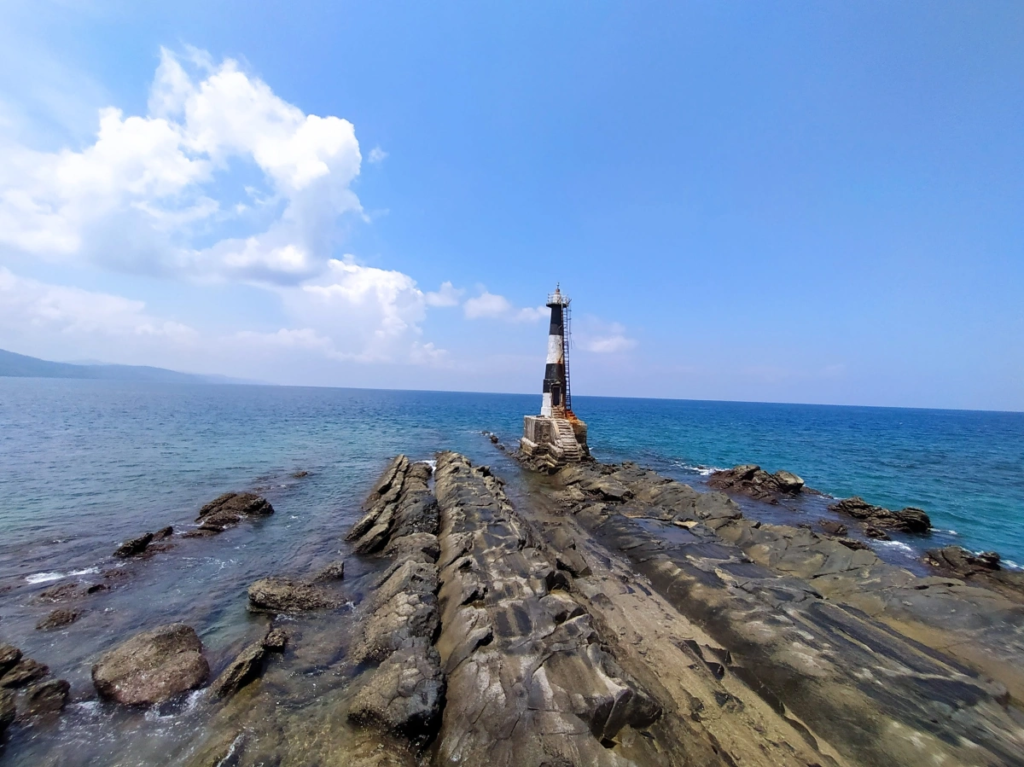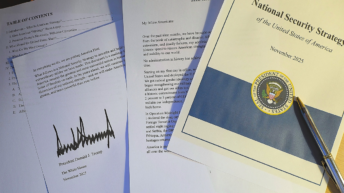
“In the serenity of the Andamans, one can hear the echoes of history and the whispers of freedom fighters.” Andaman & Nicobar Islands, India’s Strategic and Historical Treasure
The Andaman and Nicobar Islands, a pristine archipelago in the Bay of Bengal, hold an unparalleled position in India’s history, geography, and strategic framework. This article explores their historical significance, geographical importance, and cultural richness while reflecting on their contemporary relevance to India. However, apart from their scenic charm, the Andaman and Nicobar Islands are significant in the annals of India’s struggle for independence. The infamous Cellular Jail, often referred to as Kala Pani or the “black water” prison, stands as a silent witness to the sacrifices made by India’s freedom fighters. Within its walls countless revolutionaries endured unimaginable hardships, their spirits unbroken in their quest for India’s freedom. One of the memorable shlokas associated with Veer Savarkar, perhaps its most famous inmate, written during his imprisonment, reflects his indomitable spirit and devotion to Bharat Mata (Mother India):
“नेति नेति वदन्ति यतयो वेदनिशासु गीता।
किंचिदास्ति तदेव सत्यमिति स्तुवन्ति मनीषा।
तत्क्रतुर्वद धन्यः कृतवानर्थकाया।
नाभयं च ततः परं किमपि ध्रुवमिति मन्ये।”
“Where the scriptures and learned minds seek the truth with endless queries, the wise declare that truth is singular and unchanging. Fortunate are those who dedicate themselves to achieving this realisation, forsaking fear and worldly attachments.” These verses mirror Savarkar’s unwavering commitment to truth, courage in the face of adversity, and acceptance of the ultimate sacrifice for the motherland. His life and teachings still inspire many to work for national unity, resilience, and progress.
The Andaman and Nicobar Islands have a storied past; they provided a key maritime base to the Chola Empire. The Cholas used them to extend their naval dominance across the Bay of Bengal and the Indian Ocean, thus gaining strategic importance even in ancient times. During the colonial era, the islands particularly the infamous Cellular Jail, became a symbol of India’s freedom struggle. The Cellular Jail, constructed by the British in 1906, was designed to isolate and break the spirit of political prisoners. Its architecture was a manifestation of this intent: seven wings radiating from a central tower, resembling the spokes of a wheel. Each wing contains numerous small, solitary cells where prisoners were confined, and stripped of any contact with the outside world. The prison’s seabound isolation supported its reputation as a place of no return.
The term Kala Pani encapsulates the dread associated with this exile. For the British, this facility was a tool to suppress dissent and crush the revolutionary spirit. For the prisoners, however, it became a crucible of courage and a symbol of resistance. Among the many freedom fighters who endured the horrors of Kala Pani, Vinayak Damodar Savarkar’s story stands out as one of indomitable will and relentless patriotism. He was sentenced to two life terms of imprisonment, amounting to 50 years, and spent years in solitary confinement in a dark and damp cell, cut off from the world. From the corridor outside his cell, one beholds the vast expanse of the Andaman Sea—a sight that may have offered a semblance of solace to him and his fellow captives.
Savarkar’s contributions to the freedom struggle were profound and multifaceted. A staunch advocate of complete independence from British rule he believed in armed resistance to achieve this goal. Despite the harsh conditions of imprisonment, Savarkar’s spirit remained unyielding. He used his time in captivity to reflect, write, and continue his mission in the only way available to him—through his words. While in prison, Savarkar penned some of his most influential works, which still resonate in Indian political and social discourse. His book Hindutva: Who Is a Hindu?, written in 1923, laid the foundation for the ideology of Hindu nationalism. In this work, Savarkar defined Hindutva as a cultural identity transcending religious boundaries and advocated unity among Hindus to achieve national sovereignty. The book is a philosophical treatise and a call to action that highlights the importance of unity and cultural pride.
Savarkar also wrote The History of the War of Indian Independence, a detailed account of the Revolt of 1857, which he termed the first war of Indian independence. This book, banned by the British for its incendiary content, became a source of inspiration for future revolutionaries. Savarkar’s ability to produce such powerful writings under the most adverse conditions is a testament to his resilience and intellectual prowess. Savarkar, with his brother Ganesh Damodar Savarkar, founded the Abhinav Bharat Society in 1904. Originally named Mitra Mela, this secret society became a hub for revolutionary activities. It sought to instill a sense of nationalism among the youth and mobilize them for armed resistance against British rule. The society carried out several high-profile assassinations of British officials, which led to the arrest and imprisonment of the Savarkar brothers. The Abhinav Bharat Society’s influence extended beyond its years of activity, inspiring later movements and revolutionaries. Though formally disbanded in 1952, its legacy lives on as a symbol of unwavering commitment to India’s independence.
Savarkar envisioned an India where every citizen, regardless of caste, creed, race, or religion, would enjoy equal rights and obligations. He believed in a united and inclusive nation, where minorities would be given safeguards to protect their cultural and religious identities but would not be allowed to undermine national unity. His advocacy for joint electorates and the principle of “one man, one vote” reflected his commitment to democratic ideals. Savarkar also waged a war against social evils such as casteism and untouchability. He championed the cause of inter-caste marriages and criticised taboos surrounding sea-crossing and re-conversion. His efforts to dismantle these regressive practices were revolutionary for his time and underscored his vision of a progressive and equitable society. Today, the Cellular Jail stands as a national monument, a poignant reminder of the sacrifices made by India’s freedom fighters. It has become the first stop for tourists visiting the Andaman and Nicobar Islands, offering a glimpse of the grim realities faced by those who dared to challenge colonial rule. The prison’s museum houses artifacts, photographs, and documents enshrining stories of bravery and endurance. The Sound and Light show brings to life the tales of the heroes who endured the greatest hardships within these walls.
For Savarkar and his fellow prisoners, the sea may have represented both the barrier to freedom and the boundless possibilities of a liberated India. The Andaman and Nicobar Islands, once synonymous with exile and punishment, have become a source of pride for the nation. They are home to a diverse population and display a unique cultural heritage and vibrant ecosystems. The Cellular Jail and the stories of revolutionaries like Savarkar evoke the price of liberty and the strength of the human spirit.
In 1943, the Andaman and Nicobar Islands gathered fame as the location where Netaji Subhash Chandra Bose unfurled the Indian tricolor, declaring the islands as part of liberated India under the Azad Hind Government. This act cemented their role in India’s quest for sovereignty. Strategically located at the juncture of the Bay of Bengal and the Andaman Sea, the islands are sometimes described as India’s “unsinkable aircraft carrier.” They are critical to safeguarding India’s maritime interests, enabling surveillance of key shipping routes, and ensuring security in the Indo-Pacific region. The islands are renowned for their biodiversity, featuring unique flora and fauna, and they are also a part of India’s disaster response framework. Their proximity to Southeast Asia and the Indian mainland makes them pivotal in humanitarian aid and disaster relief operations.
Home to diverse tribal groups like the Shompen and Southern Nicobarese, the archipelago is a treasure trove of indigenous knowledge and sustainable practices. These tribes, classified as Particularly Vulnerable Tribal Groups (PVTGs), have lived in harmony with nature for centuries. Their spiritual beliefs are deeply intertwined with the islands’ ecosystems, as seen in the community-led conservation of places like Meroë Island (Piruii) and Menchal Island (Pingaeyak). In a historic decision intended to shed colonial legacies, the Indian government has renamed the capital, Port Blair, as “Sri Vijaya Puram.” Union Home Minister Amit Shah announced that this name change honors the islands’ role in the freedom struggle and their connection to ancient Indian empires. Other renaming initiatives include:
- Netaji Subhas Chandra Bose Dweep (formerly Ross Island)
- Shaheed Dweep (formerly Neil Island)
- Swaraj Dweep (formerly Havelock Island)
These changes reflect a growing emphasis on reclaiming India’s heritage and recognizing the islands’ historical contributions. Recent developments highlight the islands’ ecological and cultural significance:
- Meroë Island: Revered by the Nicobarese as Piruii, this island holds spiritual and ecological importance, and is proposed as a Coral Sanctuary.
- Menchal Island: Known as Pingaeyak, this island is managed sustainably by local elders, and is proposed as a Megapode Sanctuary.
- Little Nicobar Island: A haven for endangered species like Leatherback turtles, is proposed as a Leatherback Turtle Sanctuary.
The islands are being developed as a hub for sustainable tourism, renewable energy, and maritime infrastructure. Their deep-sea ports and proximity to global shipping lanes makes them critical to India’s economic growth and oceanic trade. On the defense front, the islands are integral to India’s military strategy, hosting naval and air force bases that bolster the country’s presence in the Indian Ocean region. They play a pivotal role in securing India’s exclusive economic zone (EEZ) and enhancing regional connectivity under initiatives like SAGAR (Security and Growth for All in the Region).
The Andaman and Nicobar Islands are not just a cluster of islands; they offer a sample of India’s history, cultural diversity, and strategic foresight. By honoring their past and investing in their future, India ensures that these islands remain a beacon of resilience, heritage, and progress. The renaming of Port Blair to Sri Vijaya Puram symbolises this renewed commitment to acknowledge the archipelago’s place India’s national narrative.






Add comment